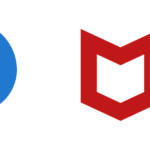Information is gold in an ever-evolving digital world, and sifting through expansive data terrains to extract valuable insights is not only smart but also essential. That’s where data mining software tools come into play. Such tools can a golden ticket for businesses, researchers, and data enthusiasts looking to turn raw data into actionable intelligence. They’re the unsung heroes, the behind-the-scenes magicians, which make sense of a complex web of information.
I’m Dr. Edward Baldwin, and today I’ll pull back the curtain on these powerful tools. With years of experience in cybersecurity and data analytics under my belt, I’ve seen firsthand the transformative power of effective data mining. Whether it’s unearthing patterns, trends, or invaluable insights, the right tool can turn a mountain of data into a goldmine of opportunities.
So let’s dive in, explore, and evaluate the dynamic world of data mining software tools — where technology meets ingenuity, and data meets clarity.
Basics of data mining
Understanding data mining
Data mining is a process of discovering patterns and trends in large datasets. It involves the use of various statistical and machine learning algorithms to analyze and extract useful information from the data. The goal of data mining is to find hidden patterns and relationships that can be used to make better decisions.
The process of mining data involves several steps, including cleaning, integration, selection, transformation, pattern evaluation, and knowledge representation. Each step is vital and contributes to the overall success of the data-mining process.
Importance of data mining
Data mining is becoming increasingly essential in today’s data-driven world. It is used in a variety of industries, including finance, healthcare, retail, and marketing — to name a few. The insights gained from data mining can help companies make better decisions, reduce costs, and improve customer satisfaction.
Key benefits of data mining include:
- Identifying patterns and trends that might not be obvious or immediately apparent
- Discovering hidden relationships among different variables
- Predicting future outcomes based on historical data
- Identifying areas for improvement and optimization
- Reducing risk, and increasing profitability

Types of data-mining software tools
The two main types of data-mining software tools are: on-premise and cloud-based.
Each type has its own advantages and disadvantages, and the choice between the two will depend on a user’s specific needs and requirements.
On-premise software tools
On-premise software tools are installed and run on a user’s own servers or local computers. This gives users complete control over the software, with data stored locally. Some examples of on-premise data-mining software tools include:
- IBM SPSS Modeler: A powerful data-mining and text-analytics software tool that allows users to build predictive models quickly and easily.
- SAS Enterprise Miner: Another popular data-mining software tool that allows users to create predictive models and perform advanced statistical analyses.
- RapidMiner: An open-source data-mining software tool that is easy to use and has a wide range of features.
On-premise software tools allow users complete control over user data and the software, which can be essential if they have strict data-privacy or security requirements.
One downside of on-premise software tools: They can be expensive to purchase and maintain, and they might require a dedicated IT team to manage.
Cloud-based software tools
Hosted on remote servers and accessed through the internet, cloud-based software tools are preferable to users who do not want to install any software on their own servers or local computers. Instead, data is stored in the cloud. Some examples of cloud-based data-mining software tools include:
- Microsoft Azure Machine Learning: Acloud-based, data-mining and machine-learning platform that allows users to build predictive models and perform advanced analytics.
- Google Cloud AutoML: A cloud-based data-mining and machine-learning platform that allows users to build custom-machine learning models without any coding.
- Amazon SageMaker: A cloud-based data-mining and machine-learning platform that allows users to build, train, and deploy machine-learning models at scale.
A particular advantage of cloud-based software tools is that they are often more affordable than on-premise software tools, and can be accessed from anywhere with an internet connection. However, users could have less control over their own data and software, and might need to rely on the cloud provider’s security measures to protect their data.
Popular data-mining software tools
Recommendations for popular data mining software tools that I use:
RapidMiner
RapidMiner is a popular open-source data mining software tool that offers an intuitive drag-and-drop interface for building machine-learning models. It supports a wide range of data sources, including CSV, Excel, and SQL databases. RapidMiner also has a large community of users and developers who contribute to its extensive library of machine-learning algorithms and plugins.
Oracle Data Mining
Oracle Data Mining is a comprehensive data-mining software tool that integrates with Oracle Database. It offers a range of data-mining algorithms, including classification, regression, clustering, and association rules. Oracle Data Mining also provides a graphical user interface for building and deploying predictive models.
IBM SPSS Modeler
IBM SPSS Modeler is a data-mining software tool that offers a range of advanced analytics capabilities, including text analytics, entity analytics, and social-network analysis. It provides a visual interface for building predictive models and supports a wide range of data sources, including Hadoop and SQL databases.
KNIME
KNIME is an open-source data-mining software tool that offers a wide range of data integration, transformation, and analysis capabilities. It provides a visual interface for building machine-learning workflows and supports a wide range of data sources, including CSV, Excel, and SQL databases. KNIME also has a large community of users and developers who contribute to its extensive library of machine-learning algorithms and plugins.
SAS Data Mining
SAS Data Mining is a comprehensive data-mining software tool that offers a range of advanced analytics capabilities, including data preparation, feature engineering, and predictive modeling. It provides a visual interface for building predictive models, and supports a wide range of data sources, including Hadoop and SQL databases. SAS Data Mining also features a large community of users and developers who contribute to its extensive library of machine-learning algorithms and plugins.
Each tool has its strengths and weaknesses; the choice of tool depends on the specific needs of the project.

Features to identify in data-mining software tools
When choosing a data-mining software tool, there are several features users should consider to ensure their needs are met. Here are some key features to identify:
Ease of use
Data-mining software tools should be user-friendly and easy to navigate. The interface should be intuitive and easy to understand, allowing users to quickly find the features they need. The software also should provide helpful documentation and tutorials to help users get started and learn how to navigate the tool effectively.
Data preparation
Data preparation is a crucial step in the data-mining process, and an effective data-mining software tool should make it easy to clean, transform, and preprocess user data. Look for tools offering a variety of data-preparation features, such as data profiling, data cleaning, and data transformation.
Data visualization
Data visualization is a key step of the data-mining process, as it allows users to explore and understand their data more easily. Look for tools that offer a variety of visualization options, such as scatter plots, histograms, and heat maps. The tool also should allow users to customize the visuals to meet their specific needs.
Machine-learning algorithms
A useful data-mining software tool should offer a variety of machine-learning algorithms that users can apply in order to build predictive models. Look for tools offering a range of algorithms, such as decision trees, neural networks, and support vector machines. The tool should also allow users to customize the algorithms to meet their specific needs.
Integration with other tools
Data mining is often part of a larger data-analysis workflow, so it’s important to choose a tool that integrates well with other tools. Look for ones that offer integration with popular data-analysis tools, such as Excel, R, and Python.
Choosing the right data-mining software tool
When it comes to mining data, choosing the right software tool is crucial. With so many options available, it can be overwhelming to decide which one to use. However, by considering a few key factors, users can narrow their options and choose the best tool for their needs.
What type of data will users will be working with? Some tools are suited for structured data, while others are better for unstructured data. Working with both types? Look for a tool that handles both.
Users also should consider the size of their dataset. Large datasets require a tool that can handle it efficiently. Look for tools with powerful processing capabilities and the ability to handle big data.
Ease of use is also important. Look for tools with user-friendly interfaces and intuitive workflows. This will save users time and frustration in the long run.
Cost also can vary. An expensive tool might offer essential features to data-mining needs that would be worth the cost. Free and open-source options also exist that could get the job done.
Consider the level of support and resources available for the tool. Look for tools with active communities, online documentation, and customer-support options. These resources will help users troubleshoot any issues, and get the most out of their data-mining tool.
Advantages and disadvantages of data-mining software tools
Data-mining software tools can help businesses and organizations uncover valuable insights and patterns in large data sets. However, like any technology, they have advantages and disadvantages. Let’s discuss the pros and cons of data-mining software tools.
Pros of data-mining software tools
1. Improved decision-making
Data-mining software tools can help businesses and organizations make better decisions by providing insights into customer behavior, market trends, and more. By analyzing data, businesses can identify patterns and trends that might not be immediately apparent, allowing users to make informed decisions.
2. Increased efficiency
Data-mining software tools can help businesses and organizations save time and resources by automating the process of data analysis. By using algorithms to analyze data, businesses can quickly identify patterns and trends, allowing them to make decisions faster and more efficiently.
3. Better customer-relationship management
Data-mining software tools can help businesses and organizations improve their customer-relationship management by providing insights into customer behavior, preferences, and needs. By analyzing customer data, businesses can tailor their products and services to better meet the needs of their customers, improving customer satisfaction and loyalty.
Cons of data-mining software tools
1. Privacy concerns
Data-mining software tools can raise privacy concerns, as they often require access to large amounts of personal data. Businesses and organizations must ensure that they are complying with relevant privacy laws and regulations, and that they are using data-mining software tools responsibly.
2. Risk of inaccurate results
Data-mining software tools are only as accurate as the data they analyze. If the data is incomplete or inaccurate, the results of data mining would be similarly flawed. Businesses and organizations must ensure they use accurate and reliable data when using data-mining software tools.
3. Cost
Data-mining software tools can be expensive to implement and maintain, particularly for smaller businesses and organizations. Businesses must weigh the cost of implementing data-mining software tools against the potential benefits they could provide.
Future trends in data-mining software tools
As the field of data mining continues to evolve, several trends are likely to shape the future of data-mining software tools. Here are a few of the most important trends to watch:
Increased use of artificial intelligence and machine Learning
Artificial intelligence and machine learning already play a major role in data mining, a trend likely to continue in coming years. With the help of AI and ML algorithms, data-mining software tools will be able to analyze larger and more complex data sets, identify patterns and trends more quickly, and make more accurate predictions about future outcomes.
Greater emphasis on data privacy and security
As data mining becomes more widespread, so does concern about data privacy and security. In response, data-mining software tools are likely to become more sophisticated when it comes to protecting sensitive data. This might include features like encryption, anonymization, and access controls, as well as more robust auditing and logging capabilities.
Integration with cloud computing and big data technologies
As more organizations move their data to the cloud, data-mining software tools will need to adapt. This likely will involve greater integration with cloud computing and big data technologies like Hadoop and Spark, as well as the development of new data-mining algorithms that are optimized for distributed computing environments.
Increased focus on visualization and user experience
As data mining becomes more democratized, there will be a greater emphasis on making data-mining software tools more accessible to less-technical users. This likely will involve a greater focus on visualization and user-experience design, along with the development of more intuitive and user-friendly interfaces.
The final word
Overall, the future of data mining software tools looks bright, with new technologies and fresh approaches emerging all the time. By staying on top of the trends and embracing new tools and techniques as they become available, data-mining professionals can stay ahead of the curve and continue to deliver value to their organizations.
Data-mining software tools FAQs
What are some popular data-mining tools?
There are several popular data-mining tools available in the market. Some of the most widely used tools include RapidMiner, Oracle Data Mining, R Programming, Orange, KNIME, Python, SAS Enterprise Miner, Integrate.io, and IBM SPSS Modeler. These tools are known for their ease of use, flexibility, and powerful data-analysis capabilities.
How do data-mining tools and techniques work?
Data-mining tools and techniques work by analyzing large datasets to extract useful information and insights. They use statistical and machine-learning algorithms to identify patterns, relationships, and trends in the data. These tools can be used to solve a variety of business problems, such as customer segmentation, fraud detection, and predictive analytics.
What are some free data-mining software options?
There are several free data-mining software options available for users who are looking to get started with data mining. Popular free options include Weka, Orange, KNIME, and Rattle. These tools offer a wide range of features and functionality, and are ideal for users who are just starting out with data mining.
Can data mining be done with Python?
Yes, data mining can be done with Python. Python is a popular programming language that is used for data analysis, machine learning, and data mining. There are several libraries and frameworks available in Python that can be used for data mining, such as Pandas, NumPy, Scikit-learn, and TensorFlow.
What is the difference between web mining and data mining?
Web mining and data mining are different techniques used for extracting information from large datasets. Web mining is specifically focused on extracting information from web-related data sources, such as web pages, social media, and online transactions. Data mining is a broader term that encompasses all types of data sources, including web-related data.
What are the four major types of data-mining tools?
The four major types of data-mining tools are classification, clustering, regression, and association rule learning. Classification is used to categorize data into predefined groups. Clustering is used to group similar data points together. Regression is used to predict numerical values based on historical data. Association rule learning is used to identify patterns and relationships between different variables in the data.
- Best Privacy Browser for Android: 4 Top Picks for Secure Browsing - May 6, 2024
- VPN without logs: Why it matters and how to find one - May 6, 2024
- 11 Best Data-Mining Software Tools - May 6, 2024









